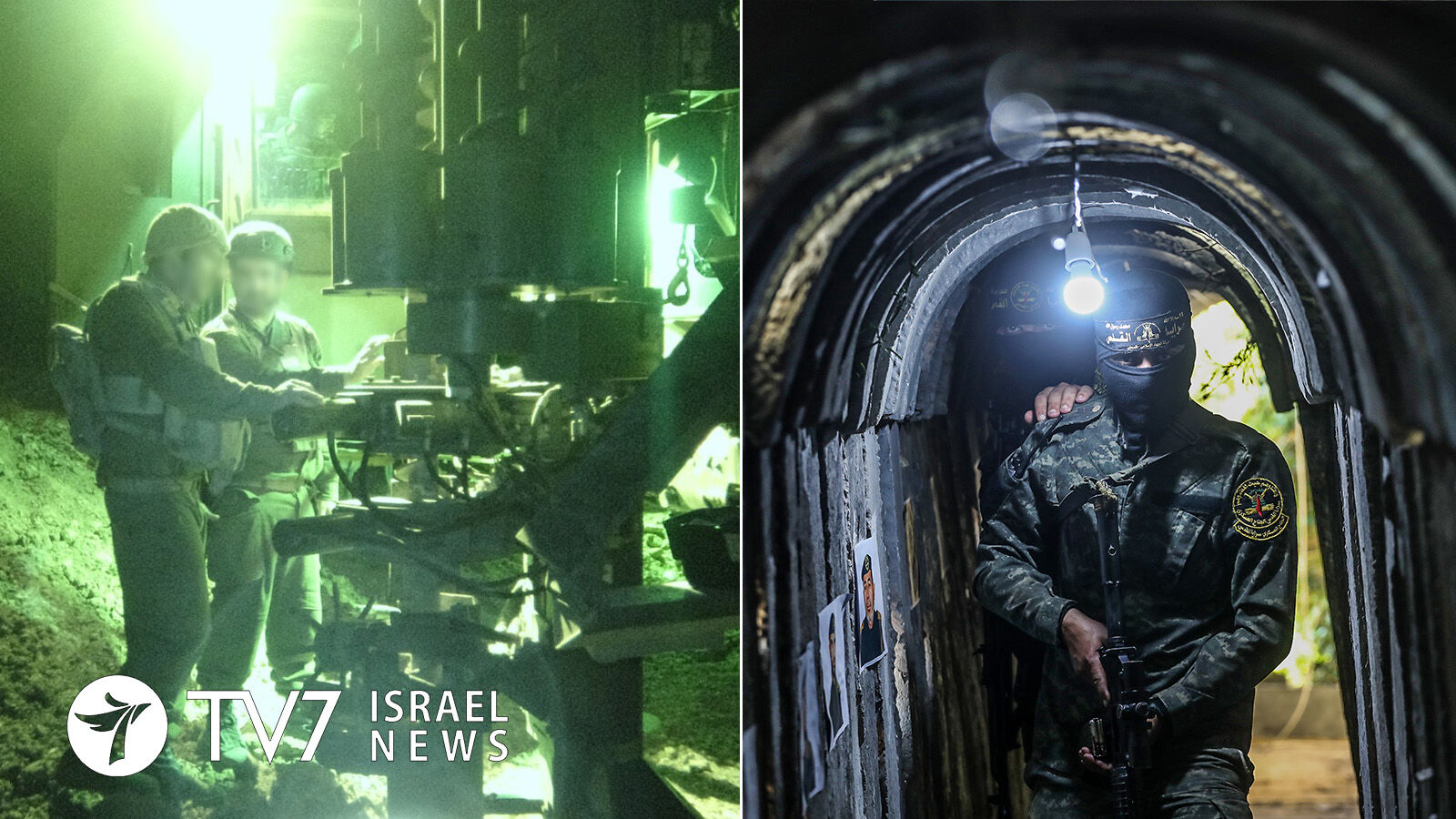The subterranean passage from the northern Gaza Strip toward Israeli territory dug by the Islamist group designed for terrorists to infiltrate Israel.
By Erin Viner
The terrorist tunnel, which included two routes, was “identified and neutralized,” said an official IDF statement. It did not pose a threat to southern Israeli communities adjacent to the Palestinian enclave, as it failed to cross the army’s newly constructed underground sensory barrier – which is considered an important component in maintaining security in the region.
“The IDF Gaza Division has been operating in recent weeks to neutralize this Hamas terrorist tunnel. We are speaking about an attack tunnel with two separate routes that crossed into Israeli territory but did not cross the new underground concrete sensory barrier. Therefore, it did not pose a risk to Israeli civilians at any time,” stated Outgoing Commanding Officer of the Gaza Division, Brigadier General Nimrod Aloni.
Armed Palestinian gunmen used tunnels to attack Israeli forces during the 2014 Operation Protective Edge, conflict. Since that time, Israel has been developing detection technologies and constructed an underground concrete barrier with sensors to foil attempts to penetrate the border.
According to Brig. Gen. Aloni, the newly identified tunnel routes had previously been neutralized during last year’s Operation Guardian of the Walls 11-day war with Gaza. “Thanks to an indication to its presence by the new barrier, we recently identified efforts to restore the old tunnel route,” he said, stressing that, “the neutralization of this tunnel joins a long list of covert and open operations that significantly damaged the underground terrorist tunnel program of the Hamas terrorist organization, and we will continue to go after them.”
Israel’s underground security barrier was completed last year. It took 3.5 years, over 1,200 workers, about 220,000 trucks of concrete, 140,000 tons of iron and steel to construct the 65-kilometer (40 mile) joint Ministry of Defense and IDF project.
The barrier features a 6 meter (20 feet) high above-ground “smart fence,” a maritime defense system to detect infiltration by sea, a remote-controlled weapons system wall, hundreds of cameras, radars and other sensors, as well as command and control rooms.
“The IDF operates in both a discreet and open manner while facing terrorist organizations in the Gaza Strip and will not allow any violation of Israeli sovereignty, both above or below ground,” stressed an Israeli Ministry of Defense (IMoD) statement.
Describing the blockage of the tunnel as “non-kinetic operation” – indicating that it was flooded, an Israeli military spokesman revealed that the passage ran deep underground and was “pretty advanced,” intended facilitate entry by Palestinian gunmen for attacks on Israelis.
Hamas Spokesman Fawzi Barhoum reacted by insisting his group has “the right to use all means to reinforce and develop its capabilities” and that the Israeli announcement presented “false achievements” to the public.
The IDF further emphasized that following the conclusion of the 5-7 August Operation Breaking Dawn conflict with the Palestinian Islamist Jihad (PIJ) terror group, Israeli security forces “remain prepared for a wide range of scenarios involving the Gaza Strip.” The three-day eruption of violence was between Israel and the Iranian-backed PIJ, while avoiding a direct confrontation with the larger and more powerful Hamas that seized control of Gaza in 2007.
